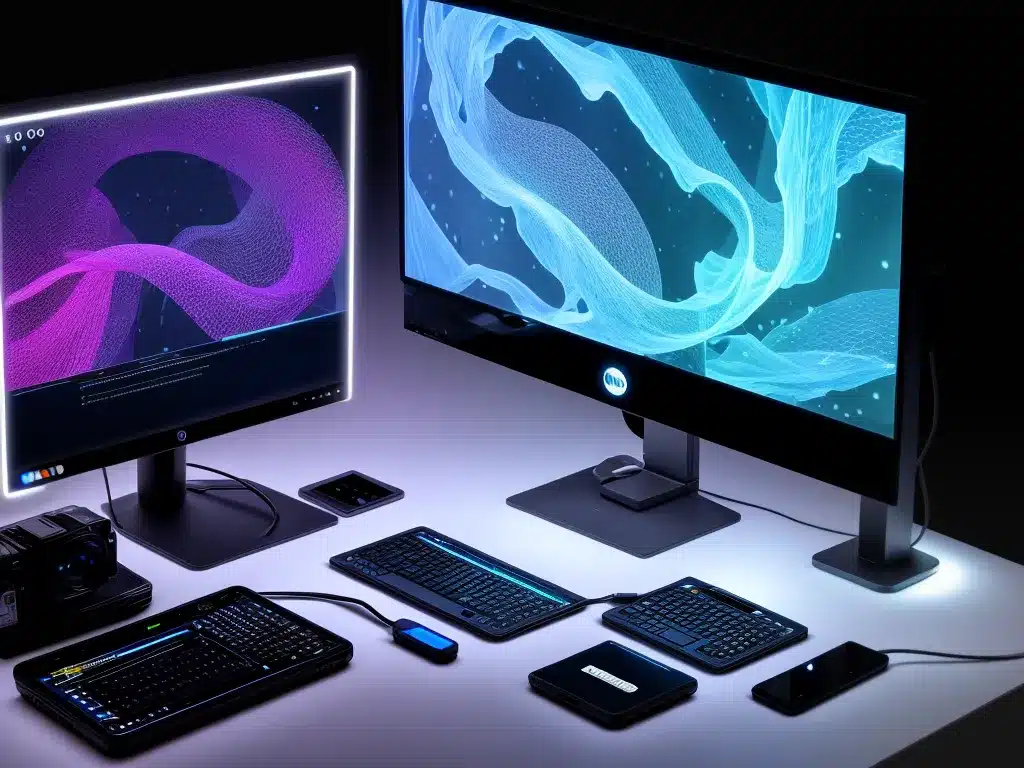Introduction
The display industry is rapidly evolving with the introduction of exciting new technologies like Mini LED and Micro LED. As a consumer, it can be challenging to understand the differences between traditional LCD and OLED displays versus these newer options. In this in-depth article, I will explain what Mini LED and Micro LED are, how they work, their benefits over existing display technologies, and when we can expect to see them become mainstream.
What is Mini LED?
Mini LED is an emerging display technology that offers a performance upgrade over traditional LCD displays. Mini LED uses advanced LED backlights consisting of thousands of tiny LEDs as a backlight source. This is different from traditional LED-backlit LCD TVs that use only a few dozen LEDs.
Some key things to know about Mini LED:
-
The miniaturized LEDs allow for more precise local dimming control versus standard LED TVs. This results in higher contrast, deeper blacks, and less blooming around bright objects.
-
Mini LED TVs can deliver up to 1,000+ dimming zones compared to just a few hundred on normal LED-backlit LCD TVs. More dimming zones equal more precise control of the backlight.
-
Mini LEDs are much smaller in size than traditional LEDs, often less than 1 mm wide. This allows fitting thousands of LEDs across the backlight panel.
-
Mini LED provides OLED-like performance in terms of contrast and black levels while maintaining the brightness advantages of LCD.
Mini LED vs OLED
Compared to OLED, Mini LED offers comparable contrast and black levels but higher peak brightness. OLED panels can experience temporary image retention and permanent burn-in, whereas LCD panels with Mini LED backlights do not. However, OLED currently offers better viewing angles than LCD.
What is Micro LED?
Micro LED is a next-generation display technology viewed as the holy grail in screens. Micro LED uses millions of tiny individual LEDs as the actual pixels of the TV. This is different than Mini LED backlighting.
Key facts about Micro LED:
-
Micro LED pixels are sized under 100 microns, even down to 1 micron, enabling incredibly high resolutions and pixel density.
-
Like OLED, each pixel emits its own light, so no backlight is required. This allows total per-pixel level dimming control for essentially infinite contrast.
-
Micro LED is emissive like OLED so offers similar benefits in contrast, response times, and viewing angles.
-
The inorganic LED pixels are more resistant to burn-in than OLED and have a longer overall lifespan.
Micro LED vs OLED
Micro LED matches OLED’s perfect black levels and high contrast ratio but with higher peak brightness. Micro LED is considered immune to permanent burn-in and does not use scarce rare-earth metals like indium as found in OLED. However, manufacturing challenges have so far limited Micro LED to small screen sizes.
Benefits of Mini LED and Micro LED
Here are some of the most notable benefits these new display technologies offer over LCD and OLED:
-
Superior contrast and blacks – Like OLED, both Mini LED and Micro LED can achieve perfect black levels and high dynamic range through per-pixel dimming. This results in incredibly realistic images.
-
High brightness – Mini LED and Micro LED displays can hit very high peak brightness levels upwards of 2,000 nits. This makes them ideal for bright viewing environments.
-
Wide viewing angles – Micro LED in particular offers close to a 180-degree viewing angle like OLED, allowing clear visibility from wide angles.
-
Long lifespan – Mini LED and Micro LED panels are less prone to permanent burn-in and degradation over time than OLED, giving them a longer useful lifespan.
-
Energy efficiency – Micro LED only lights up individual pixels when needed, allowing good energy efficiency. Mini LED also concentrates light more efficiently.
When Will Mini LED and Micro LED Become Mainstream?
Mini LED TVs are already entering the market in 2022 from brands like Samsung, Sony, and TCL. However, they currently command premium prices over $2,000 for a 65-inch 4K model. Mini LED will take a few more years to rival OLED and QLED in affordability.
Micro LED remains years away from reaching consumers. Manufacturing and yield challenges have limited commercial Micro LED to small screens used in wearables and signage. Experts predict Micro LED TVs under 100-inch will not arrive until 2026 at the earliest. By 2030, Micro LED could begin challenging OLED in high-end TV markets.
The Future of Display Technology
Mini LED and Micro LED represent the exciting future of displays. These technologies will enable TVs to more closely match the contrast and viewing angles of OLED, while also boosting brightness and lifespan. For consumers seeking the next level in picture quality, Mini LED and Micro LED will be ones to watch in the coming decade. With continued development, they have the potential to eventually replace LCD and OLED entirely.













